2024 Corvette E-Ray First Ride: A Vette like no other
For a detailed technical breakdown of the Corvette E-Ray, beyond the scope of this First Ride, click here.
It’s a cold, damp day on Black Lake. The 40-degree weather and intermittent drizzle at GM’s Milford Proving Grounds skidpad are not ideal for the hard launch of a sports car. Bill Wise, the development engineer at the wheel, is not concerned.
“Do you get motion sickness?” he says. “Because with launch control, this thing seriously takes off.” The growl of a Chevy small-block rises in pitch before a plateau, ready to let loose when Bill releases the brake pedal.
“Not in a car,” I say.
Those words are barely out of my mouth before all four of the E-Ray’s wheels hook up. Butterflies hit my stomach. The acceleration is surprisingly aggressive—ruthless and immediate, like a Tesla, but made stranger, a moment later, by the combination of V-8 roar and space-age electric motor whine.

The rate at which scenery melts does not decrease with each shift snapped off by the gearbox. I am simply pressed further into my seat. As Wise stomps on the brakes, the E-Ray converts kinetic energy to electricity, then feeds that juice to the 1.9-kWh battery pack nestled in the tunnel between the seats. We come to a halt.
The faint whine of an electric motor, the crazed four-wheel clawing at launch—these are strange phenomena for a Corvette. Like watching Rambo in Italian—familiar characters, but a language you’ve never heard them speak.
The E-Ray is unlike any other Corvette. It is the first Vette with all-wheel drive. The first to use an electric drive motor. And the first to see 60 mph, from rest, in just 2.5 seconds. That’s a tenth faster than the 670-hp Corvette Z06. The 1500-hp Bugatti Chiron, with its four turbos, sixteen cylinders, eight liters, and $3 million price, does the same job in 2.4 seconds. The E-Ray will start at $104,295.
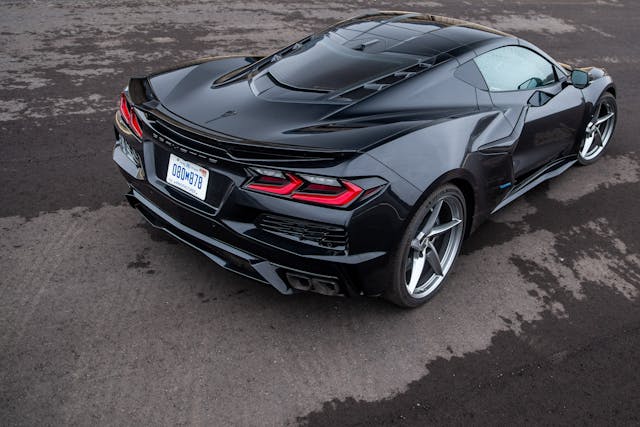
Many sports-car fans raise their eyebrows at the H-word. “Hybrid” can bring to mind a bean-shaped commuter like the Toyota Prius, but the E-Ray is nothing of the sort. More appropriate comparisons would be the McLaren P1, the Porsche 918, or the Acura NSX—performance cars of unquestionable focus, capable of harnessing electricity for performance and drivability, not just fuel economy or reduced emissions. It helps to remember that the E-Ray was baked into the development of the eighth-generation Corvette (C8) from day one, so the car is no afterthought.
General Motors claims for the E-Ray a total of 655 system horsepower, a combination of the 495-hp LT2 V-8 driving the rear axle (essentially the engine from the current Corvette Stingray), and the 160-hp, 125 lb-ft battery-electric arrangement powering the front. Both front wheels are driven by a single electric motor, via an open differential. From the right seat, the E-Ray’s front wheels seem to respond instantly to the throttle pedal. If the driver asks for more than 30 percent throttle or requests more than .15 g of straight-line acceleration, the V-8 wakes up.
The E-Ray shares its wide body, its suspension setup, and its Magnetic Ride Control dampers with the Z06. Several engineers, however, told me that the former car’s development brief was completely different: all-weather capable and angled more toward daily driving, while offering performance significantly beyond that of the base Stingray (and within spitting distance of the Z06’s ability).
“This thing is a champ in the snow, even on the standard all-season tires,” Wise says. “And here, on those same tires, you can take advantage of so much mechanical grip.”
He shows me. We knife toward the middle of the 67-acre Black Lake, entering an autocross-like cone course at roughly 90 mph. “This was never slated as an out-and-out track car, like the Z06, but it is just as capable around a race track.”
Wise stabs the throttle and cranks the steering left at the entry to a long sweeper. As the E-Ray scrubs speed, he initiates what feels, at first, like a rear-drive Corvette slide. He adjusts the car’s angle of attack with his right foot, the steering wheel hardly moving. Just before the turn’s apex, the E-Ray begins to briskly accelerate toward corner exit, never breaking the slide.
I’m at a loss. “Damn, Bill.”
“Only five minutes behind the wheel, you’d be doing the exact same thing, corner after corner,” he says. “It’s that approachable.”
Wise keeps driving. The course changes, the long sweepers replaced by a series of quick direction changes. The E-Ray negotiates the tighter corners with ease, flat and stable, the nose quickly taking a set.

Hybrids often suffer from mass bloat, a ballooning of curb weight over similar internal-combustion-only models. A visit to Milford to meet a preproduction Corvette usually means hearing someone in Chevrolet engineering declare that “every gram has to earn its way onto the car.”
This approach is common in the development of high-performance cars, but the Corvette team does it better than most. The engineers there seem to take joy in justifying each component or material down to the tiniest detail. The battery, for example, is not from GM’s Ultium family, where the hardware and its controls are generally larger and storage-optimized for long range. The E-Ray’s lighter, pouch-type LG battery was better suited to the car’s performance focus, its front axle’s demands for frequent and significant energy flow.
That axle system adds about 260 pounds of curb weight. Mass-reduction efforts to offset that gain include standard carbon-ceramic brakes and a lighter, lithium-ion chemistry for the gas engine’s 12-volt battery. The electric drive unit’s housing is magnesium, with associated fasteners and the bottom of the drive battery’s housing in aluminum. The aluminum brace between the front shock-tower tops is claimed to genuinely improve steering feel at speed, helping compensate for the slight changes in front suspension geometry required by the packaging of that front axle.
Important, too, is how little the added mass shifts balance forward. Thirty-nine-point-four percent of the Z06’s weight sits up front, 60.6 percent in the rear. The E-Ray shifts that distribution by only 1.5 percent, to 41/59.
We’ll feature a full drive of the E-Ray on these pages soon. In the meantime, from the passenger seat, the car holds promise. It feels meaningfully more exciting and interesting than the Stingray yet more tractable and comfortable than the monstrous Z06.
By switching the Corvette to a mid-engine layout, after decades of the engine up front, the C8 vaulted America’s sports car to new dynamic heights while realizing a dream envisioned by some of the car’s early creators. An all-wheel-drive Corvette with a battery and an electric motor was not on the minds of those men, but I suspect they’d find this car a triumph of engineering.
Perhaps even more than the Stingray or the Z06, the E-Ray reflects the technology and ingenuity of the current moment. Just thinking about the ride gives me those butterflies all over again.
2024 Chevrolet Corvette E-Ray
- Price: $104,295 (coupe)
- Powertrain: 6.2-liter V-8, eight-speed dual-clutch automatic transmission; 1.9-kWh pouch-type lithium-ion battery, permanent-magnet electric motor
- Horsepower: 655 from total system (V-8: 495 hp @ 6450 rpm); (e-motor: 160 hp)
- Torque: (V-8: 470 lb-ft @ 5150 rpm); (e-motor: 125 lb-ft)
- Layout: All-wheel-drive, two-seat targa-top coupe or convertible
- Curb weight: 3984 pounds
- EPA-rated fuel economy: TBA
- 0–60 mph: 2.5 seconds
- 1/4-mile: 10.5 seconds @ 130 mph
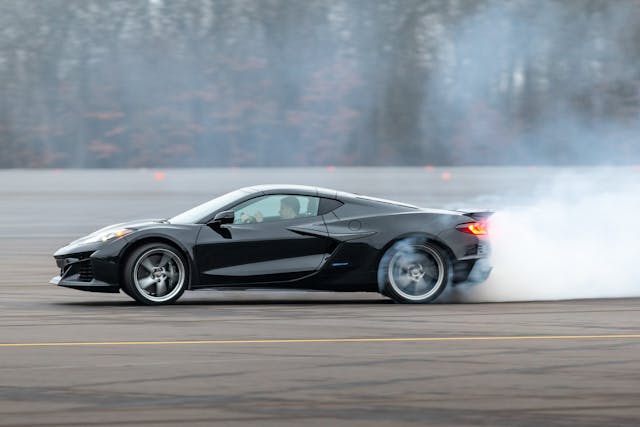
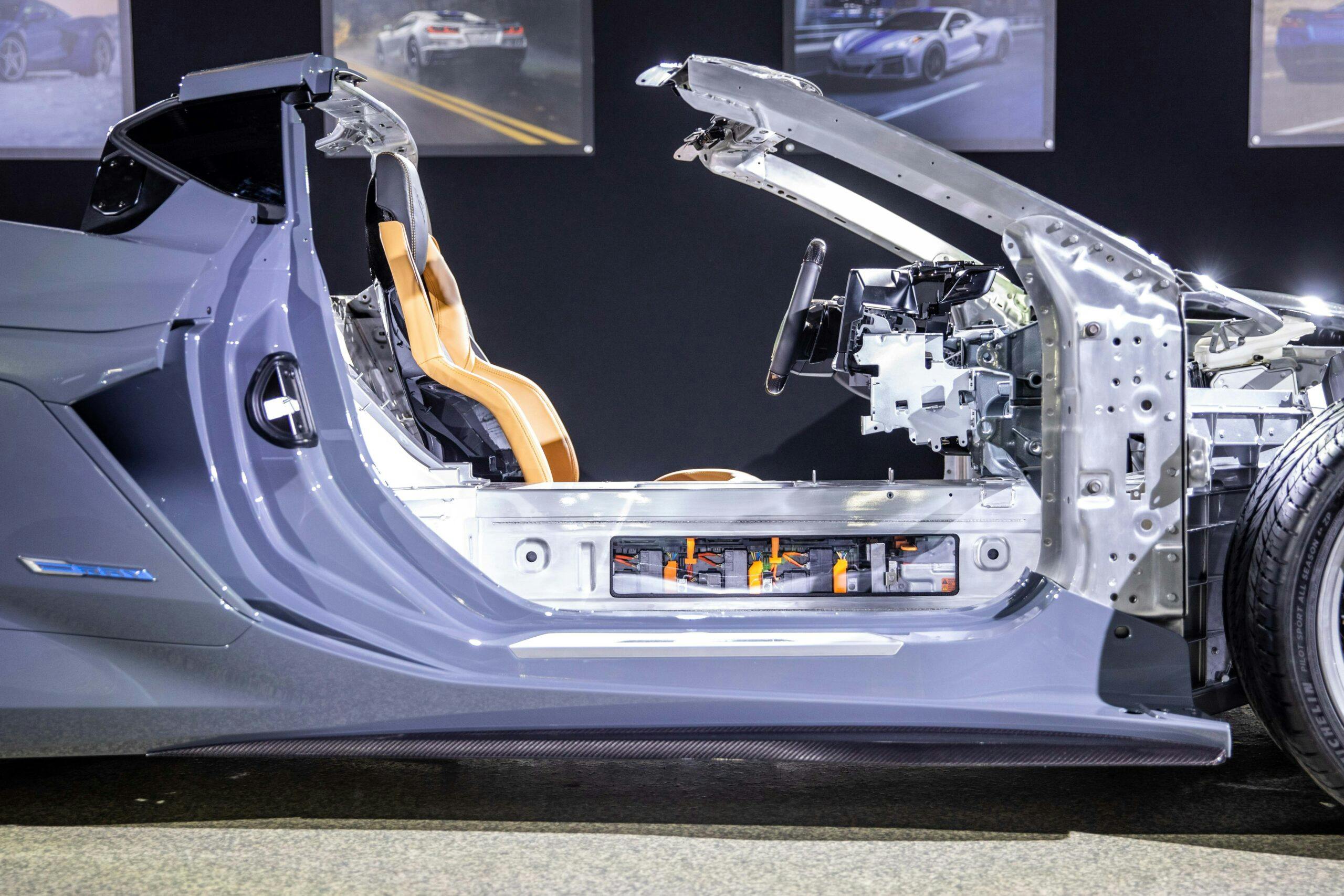

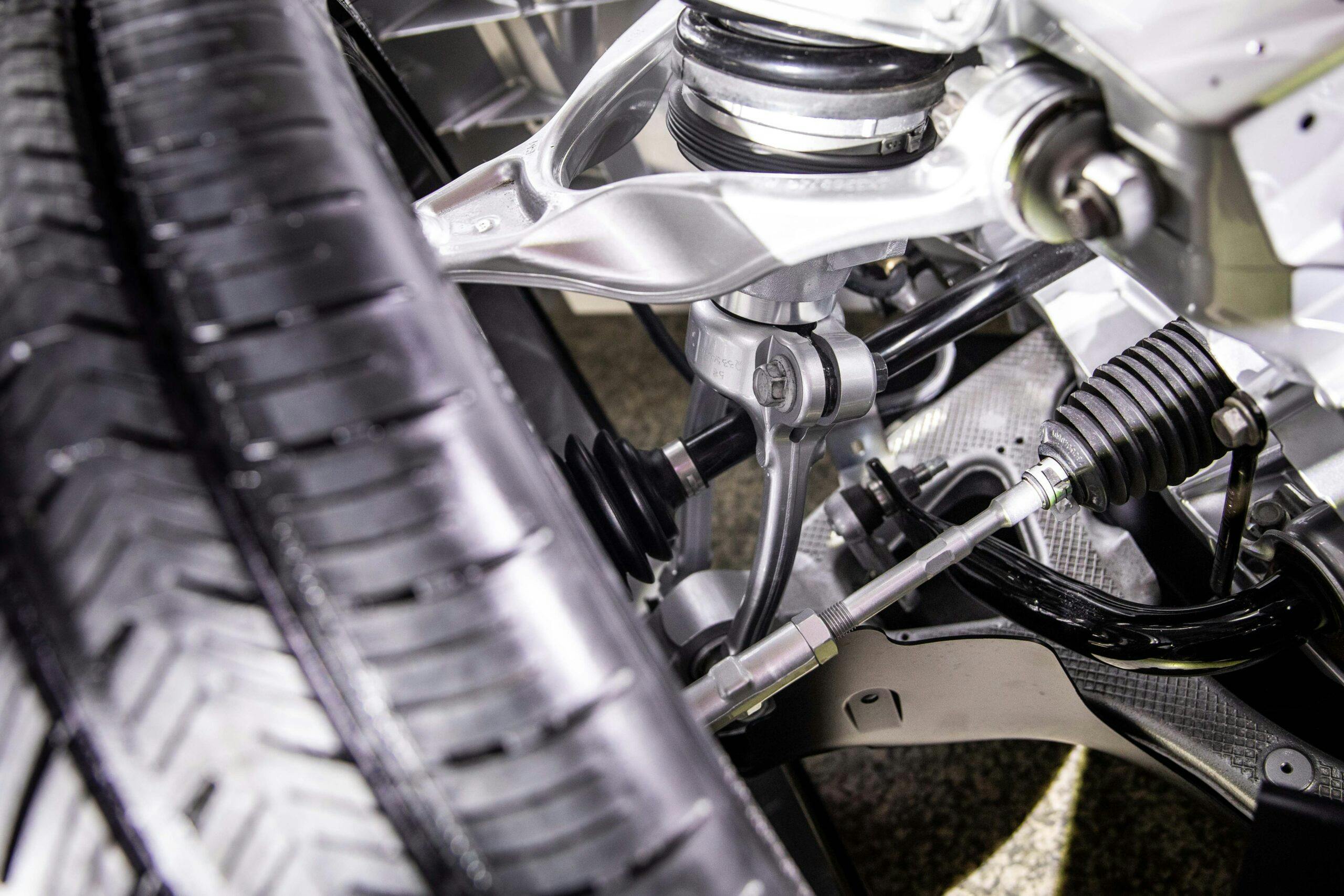
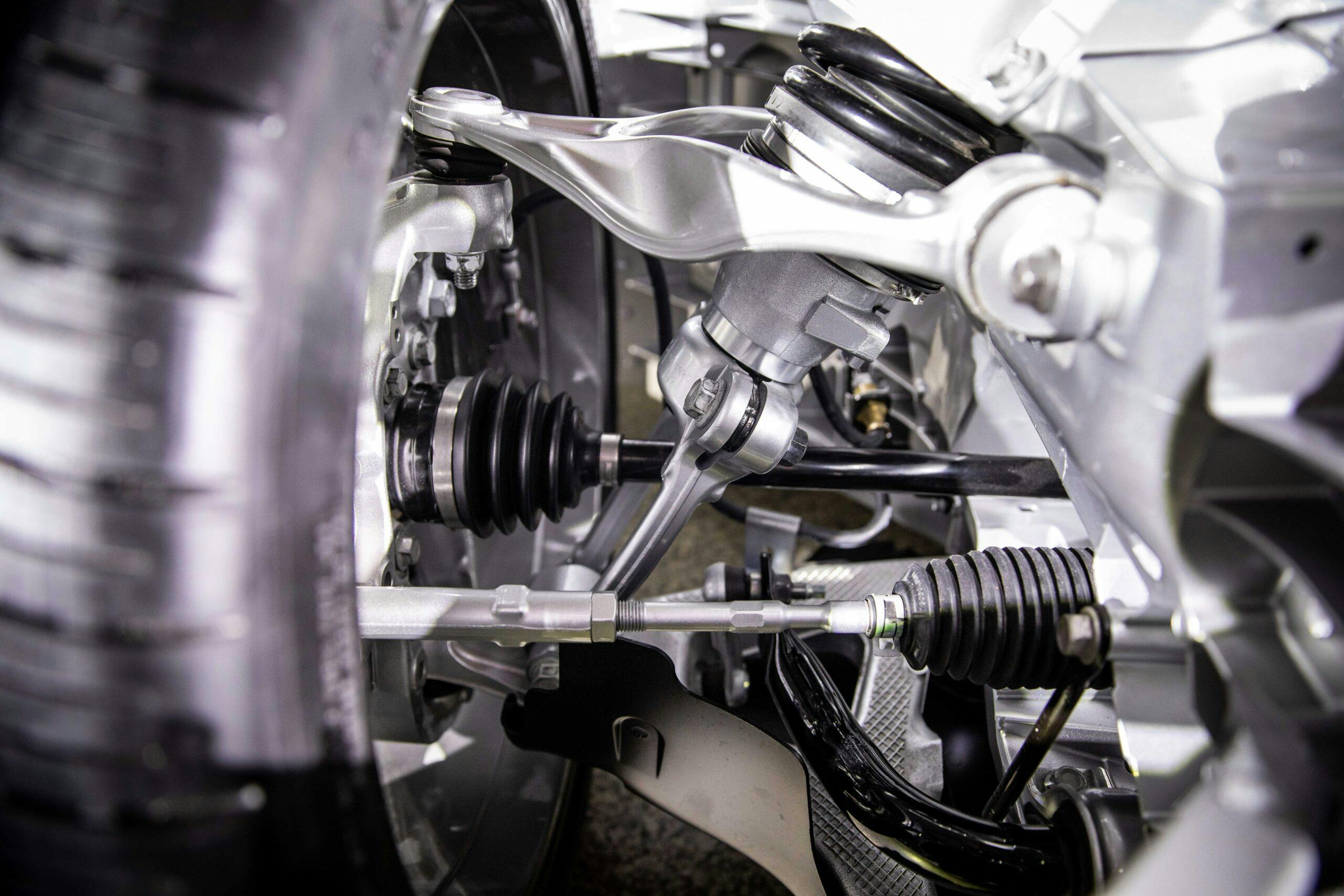
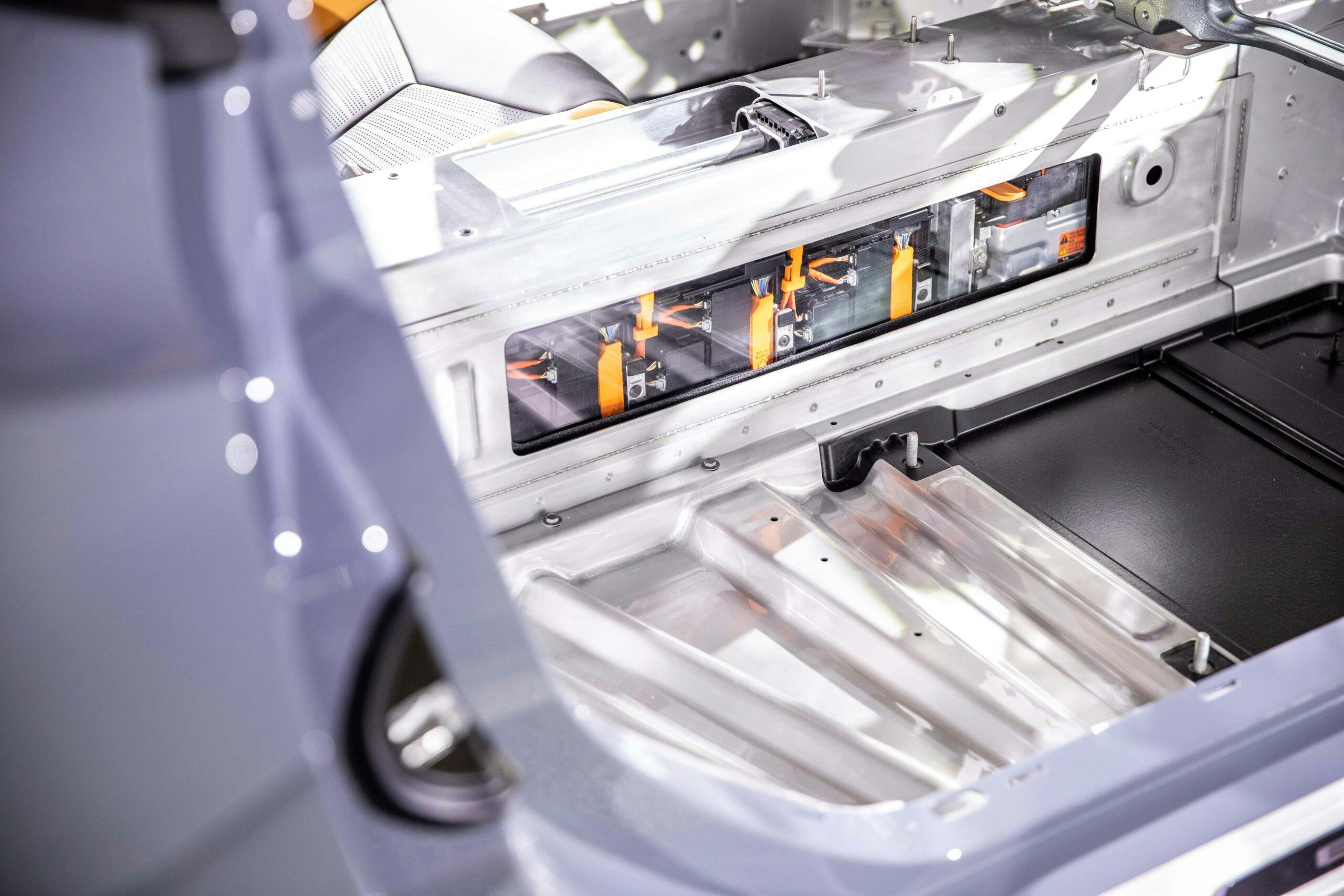
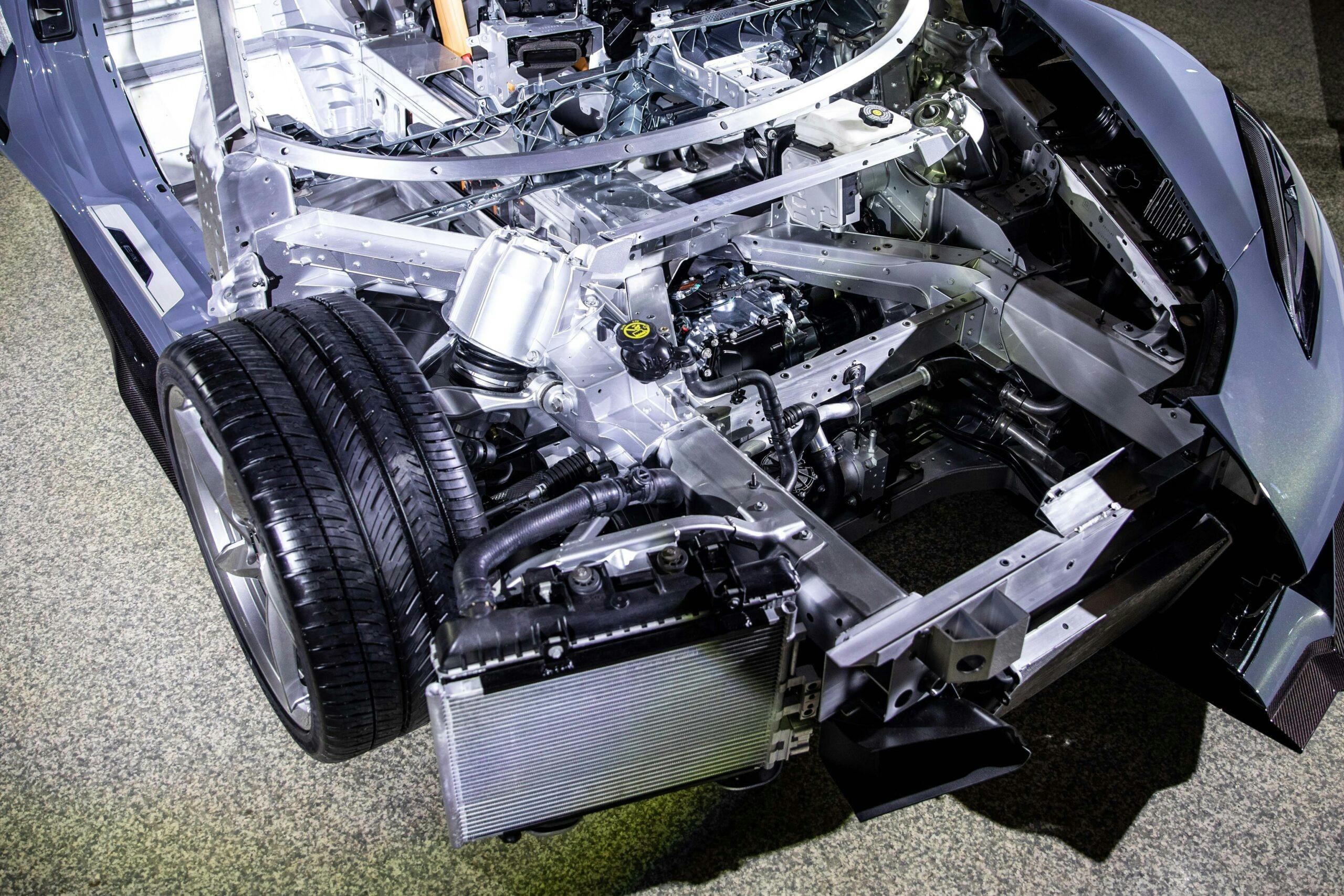

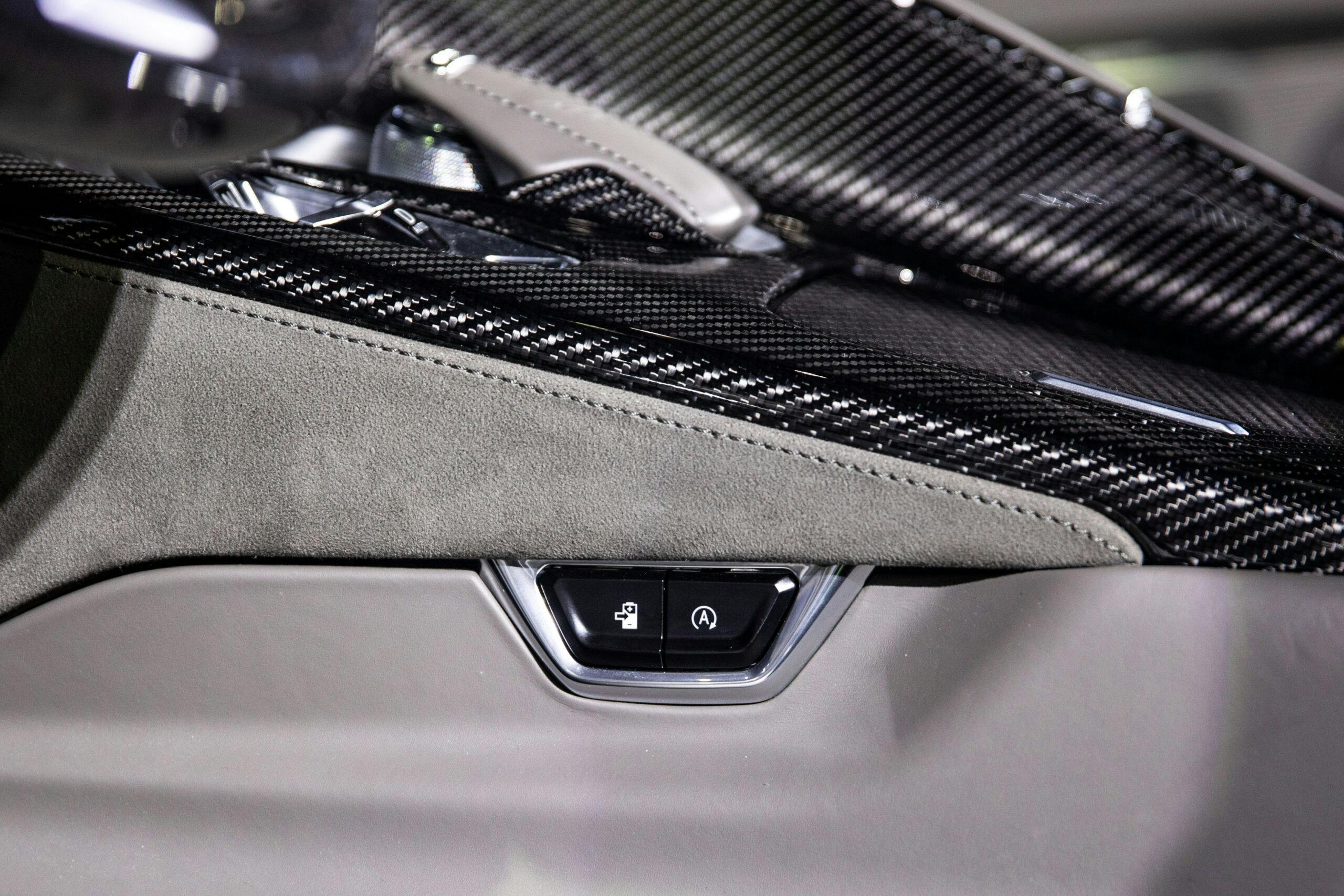
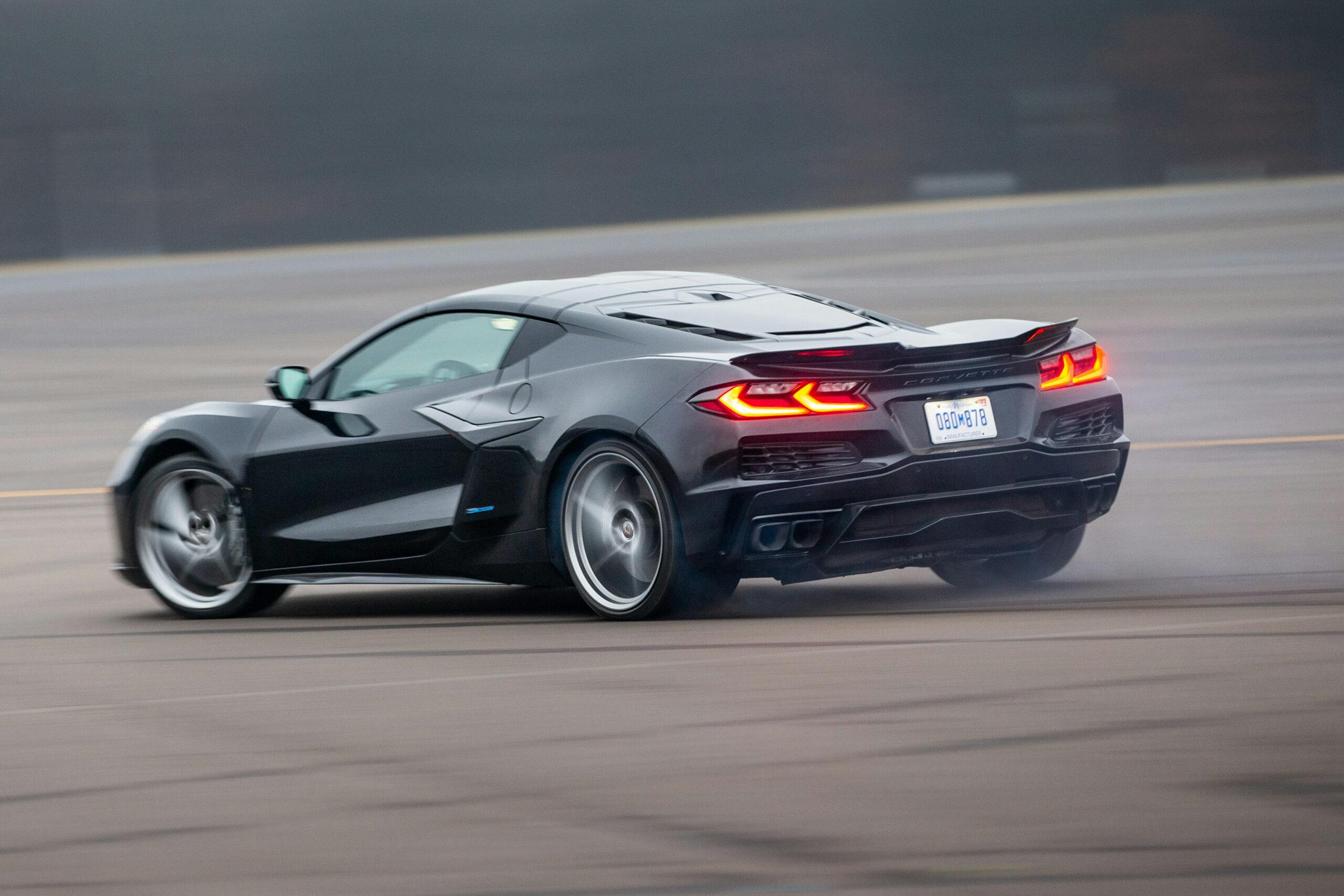

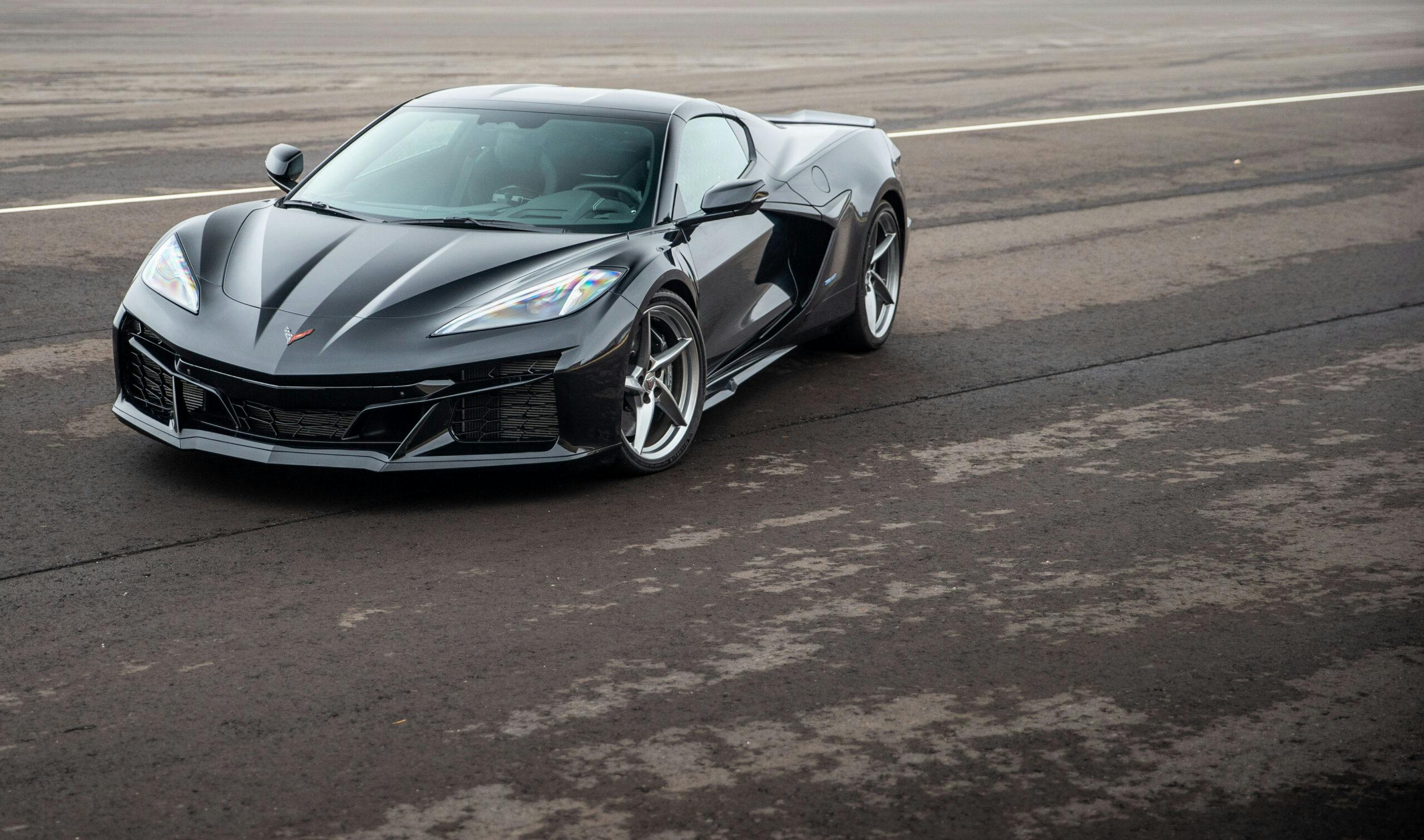
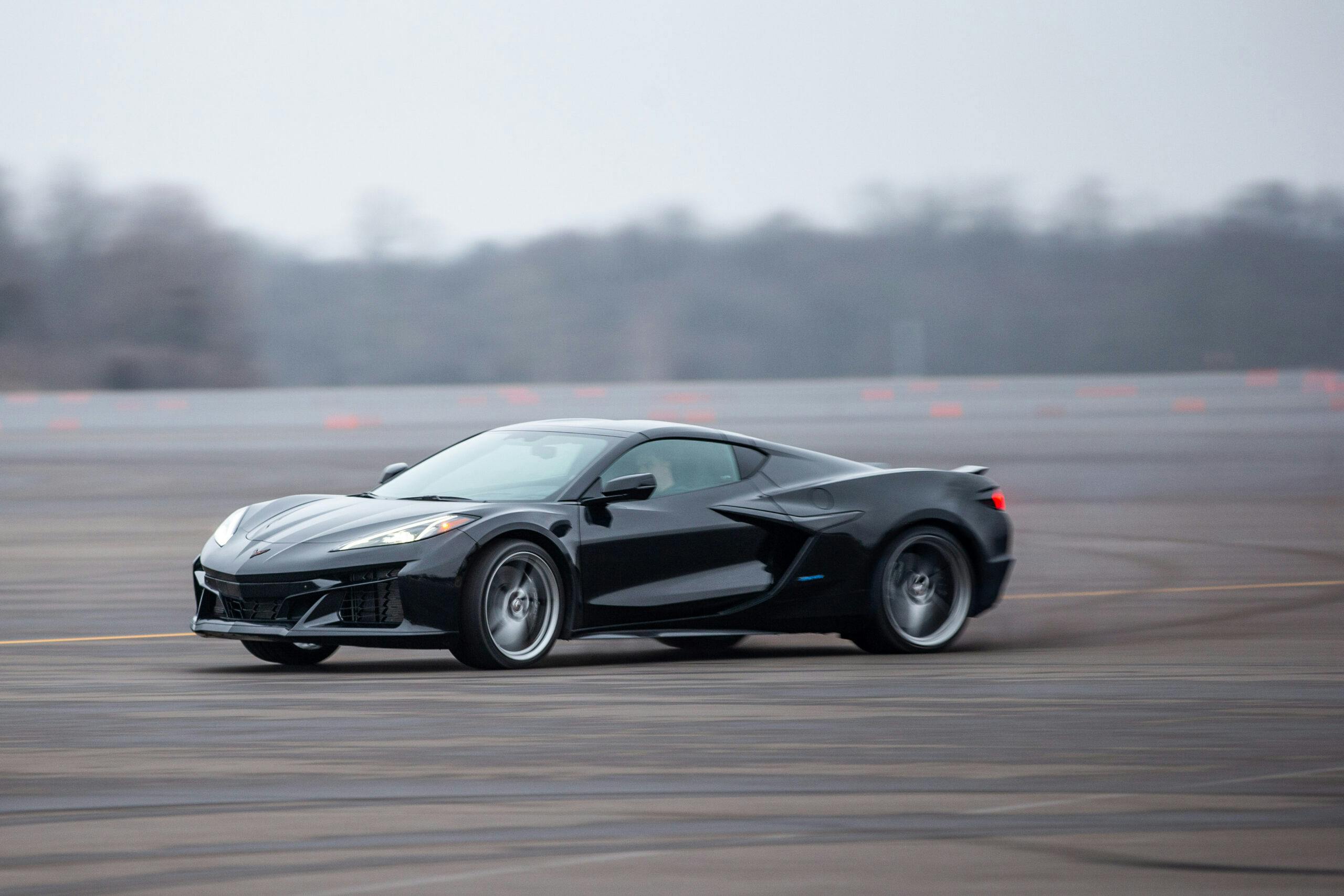
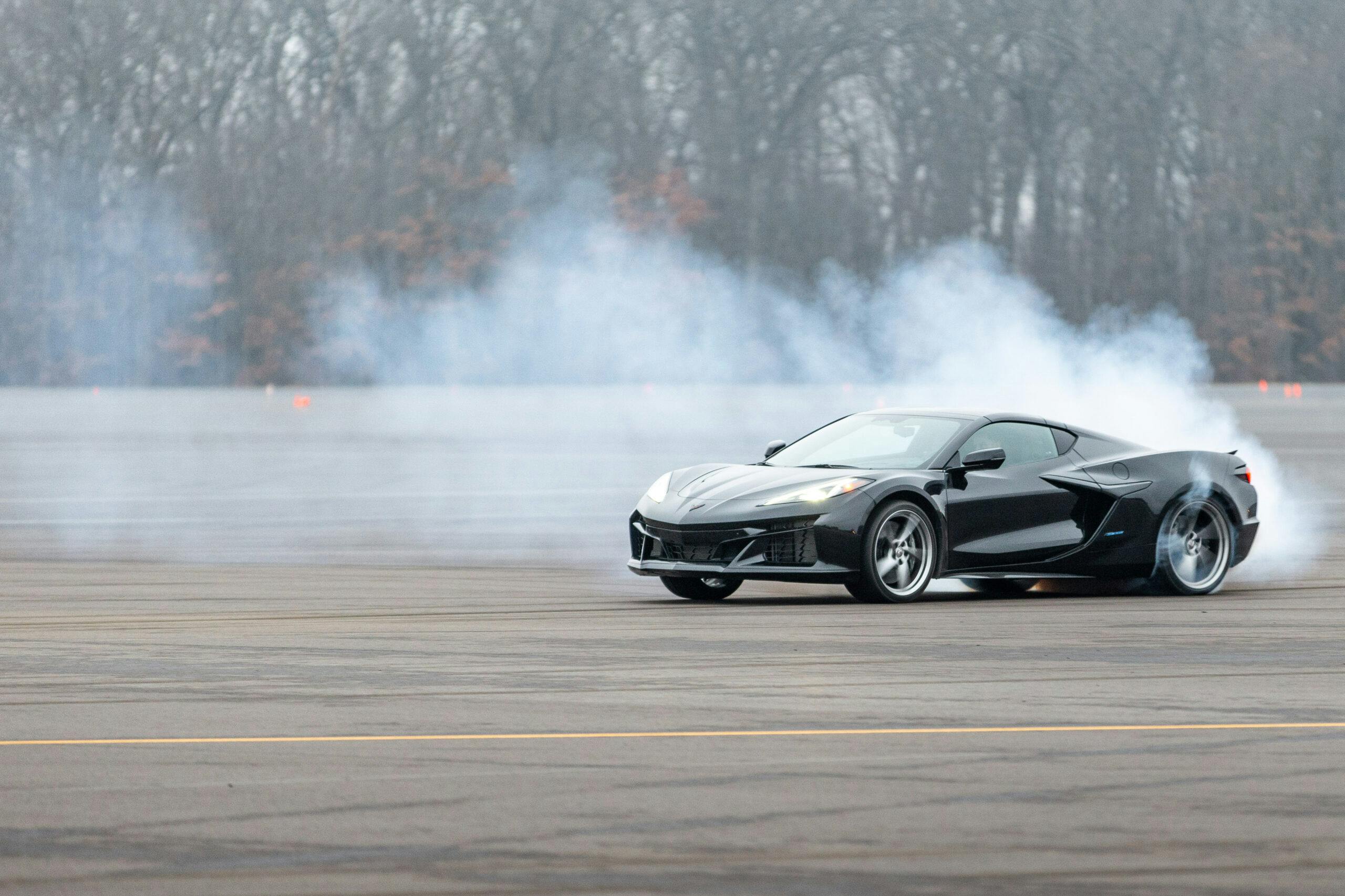
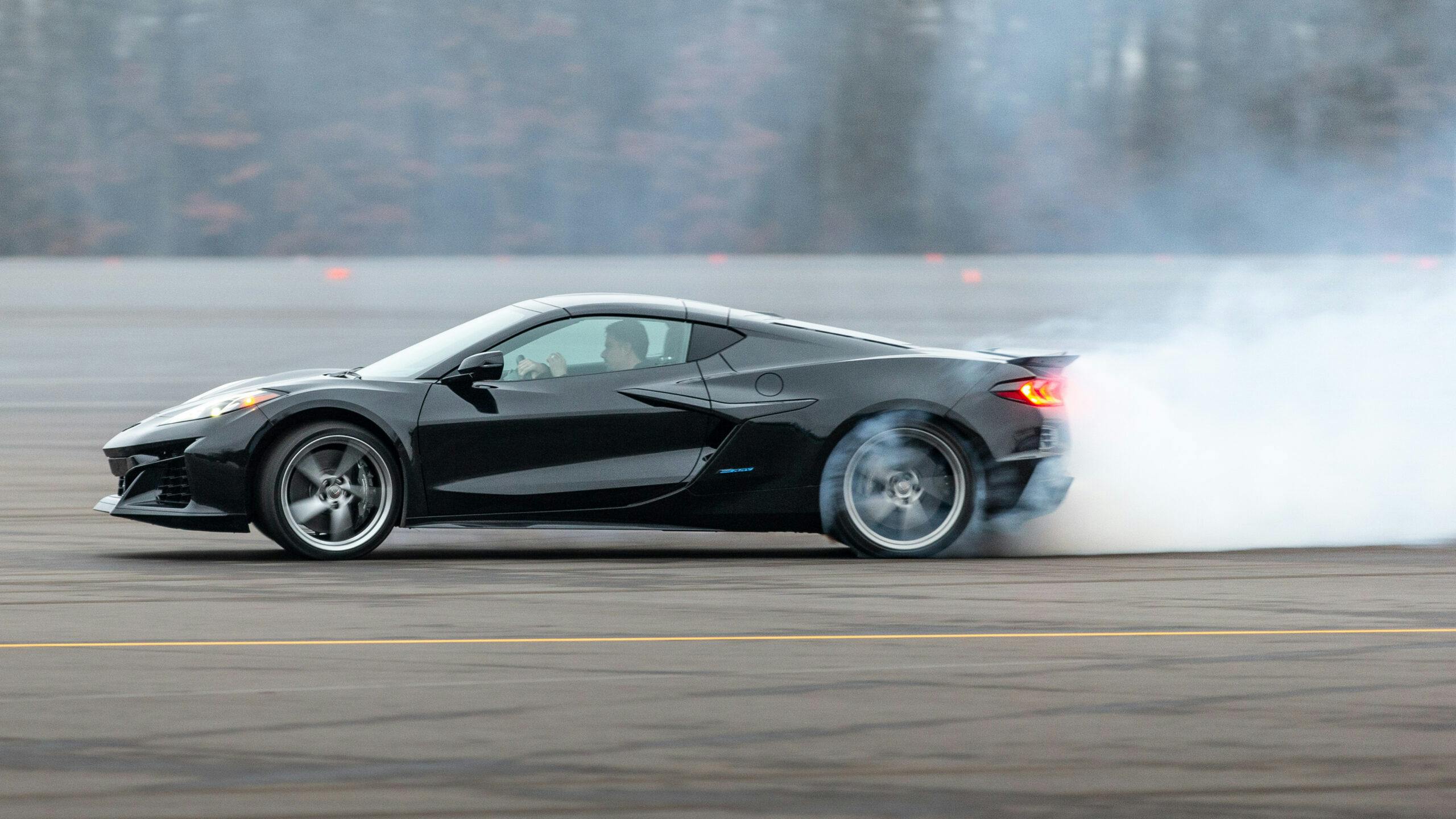
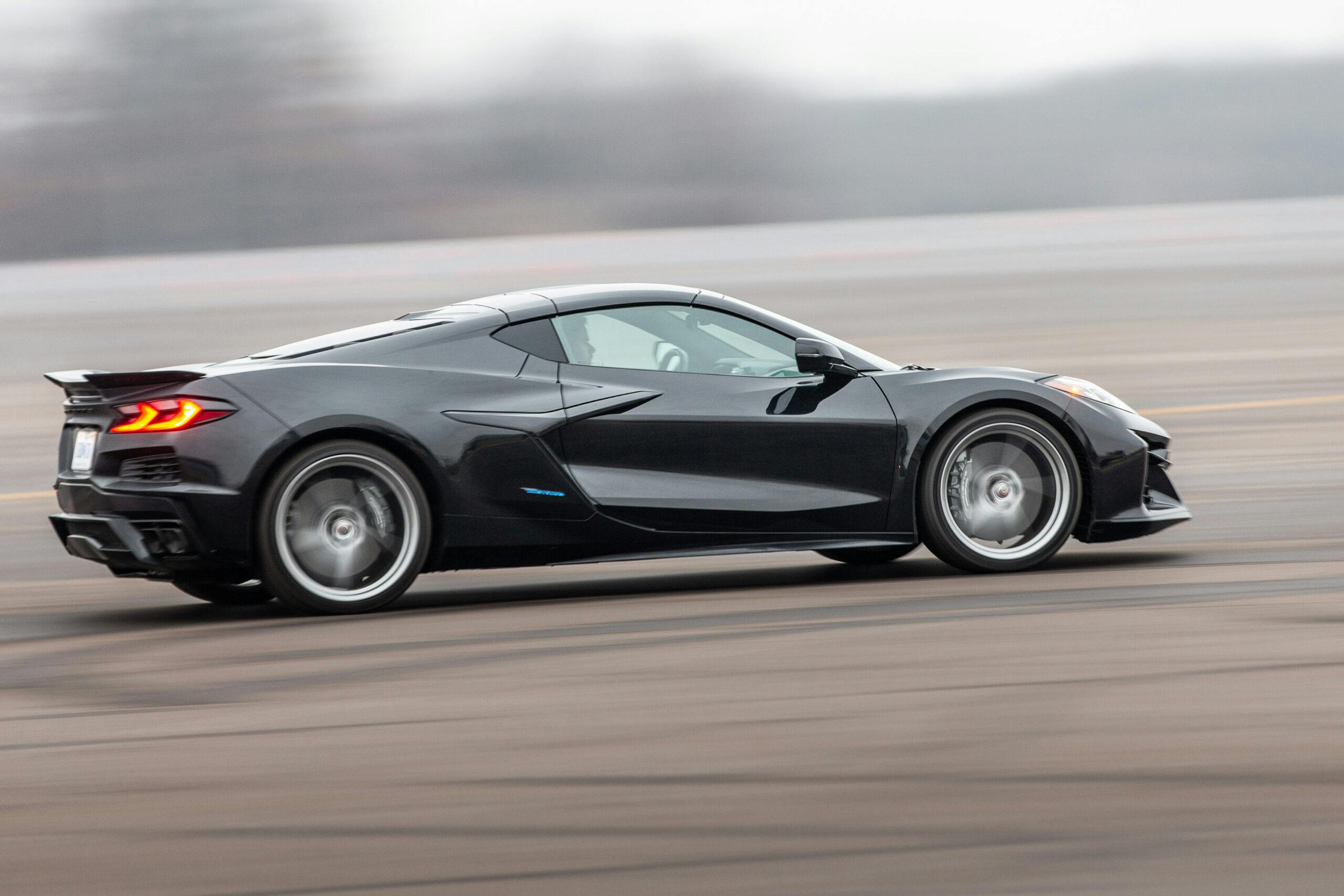
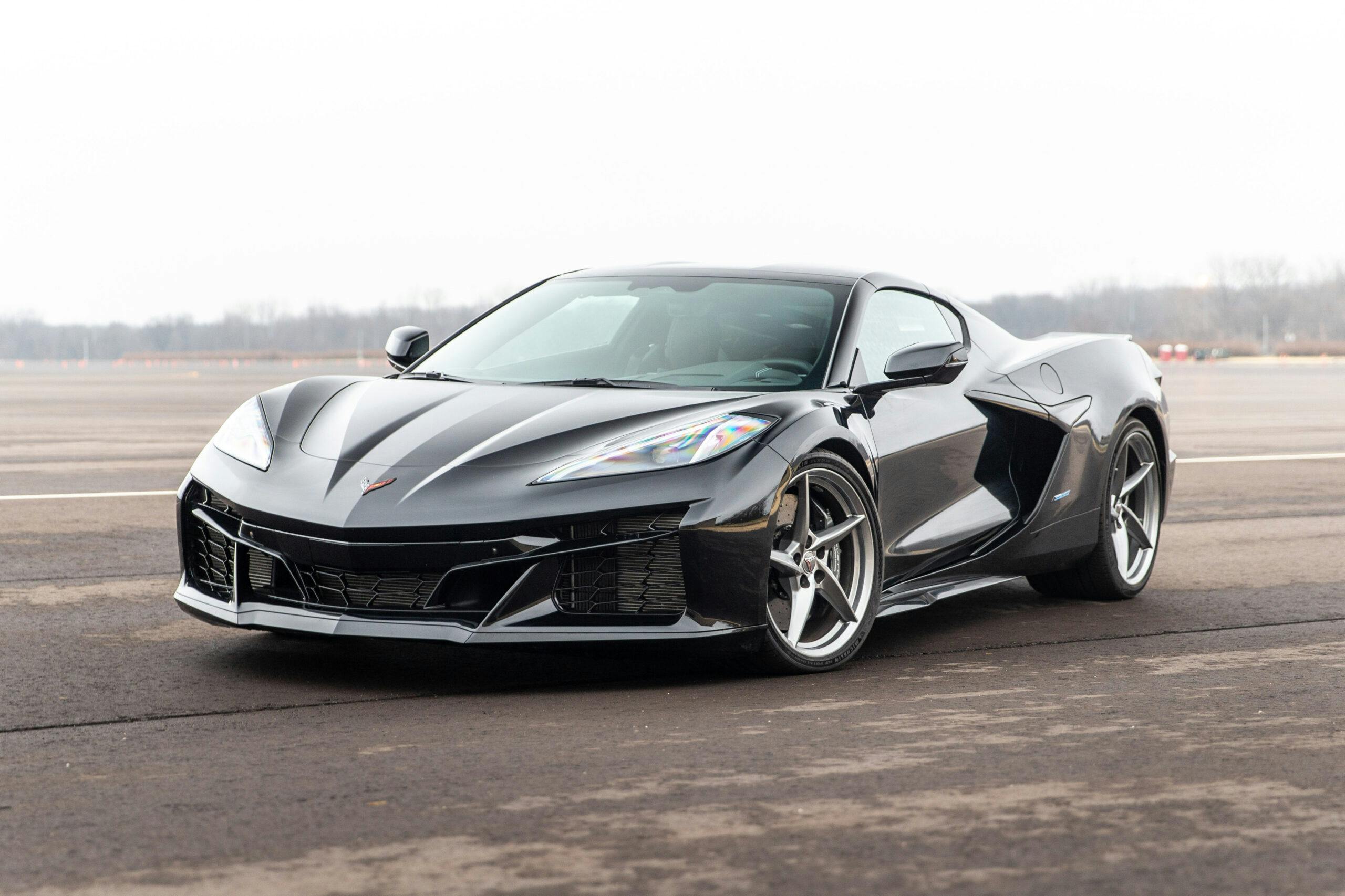
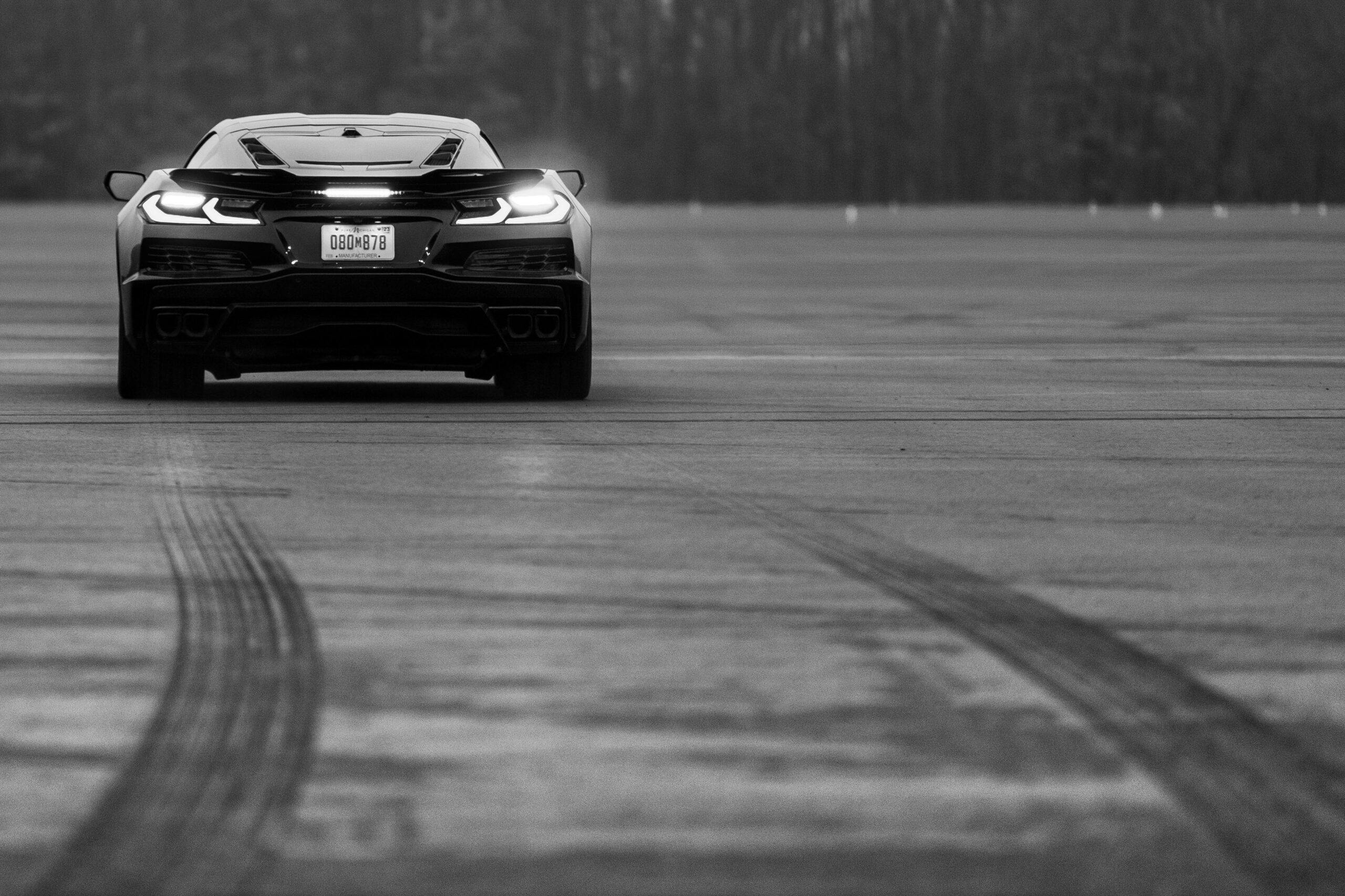
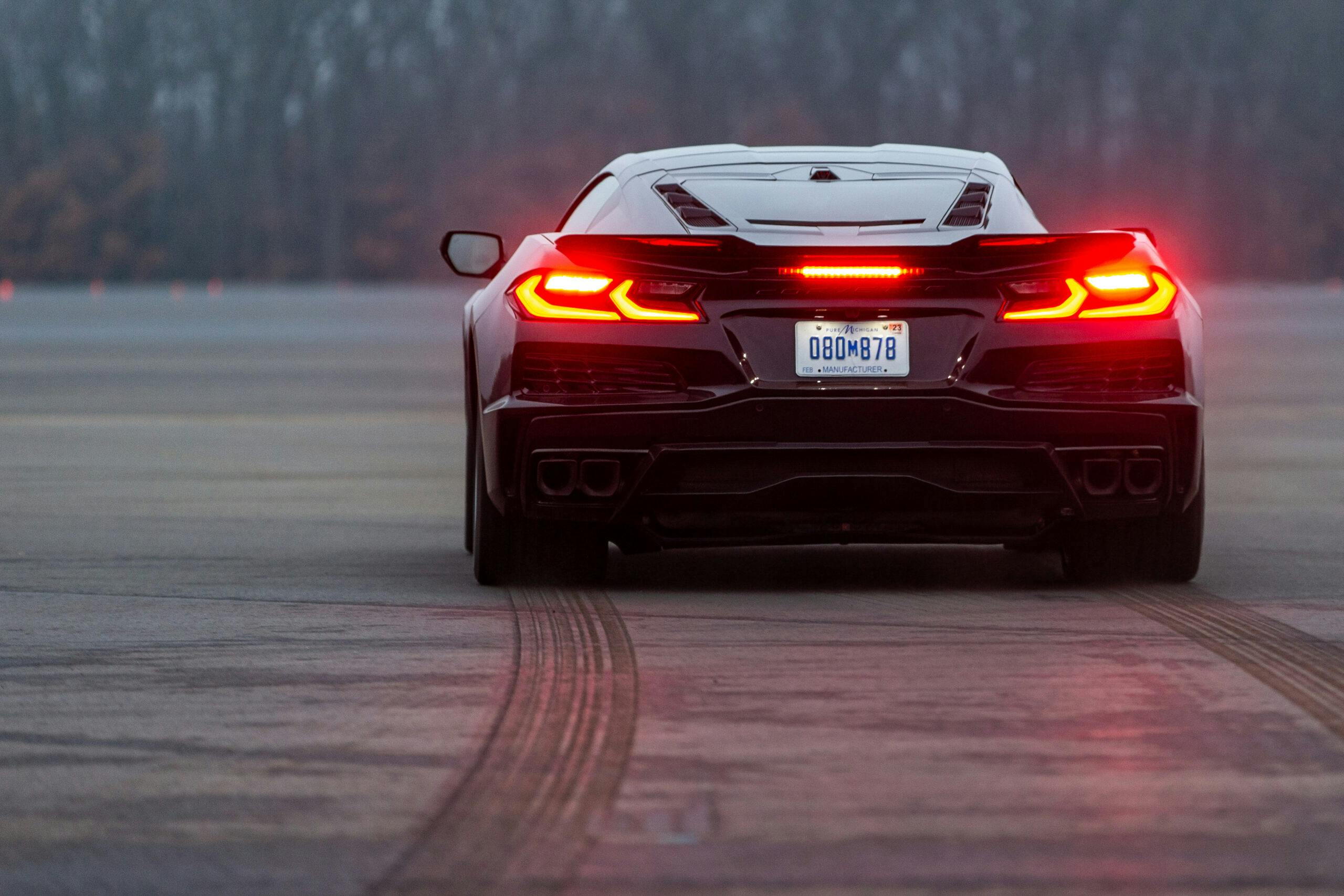
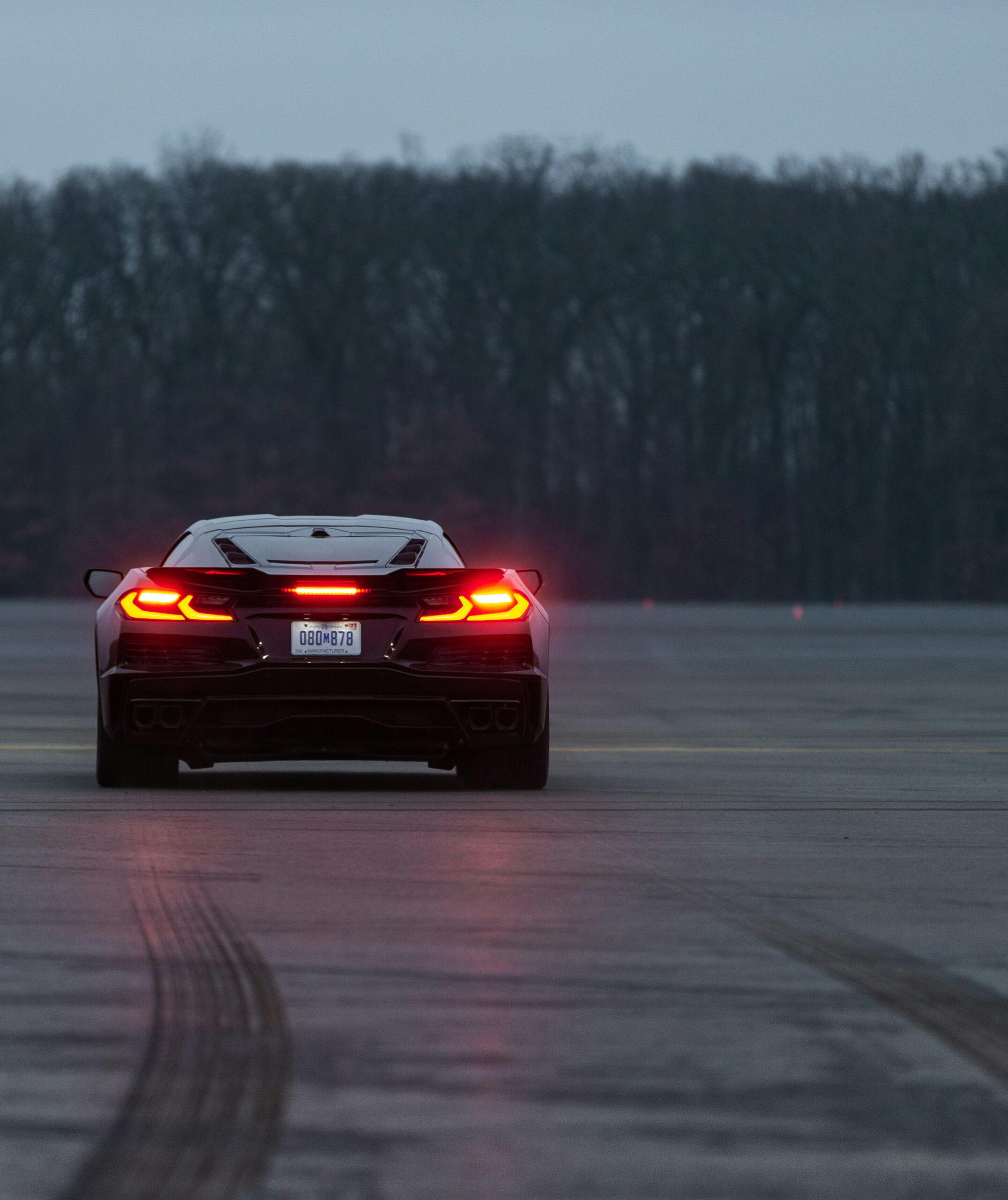



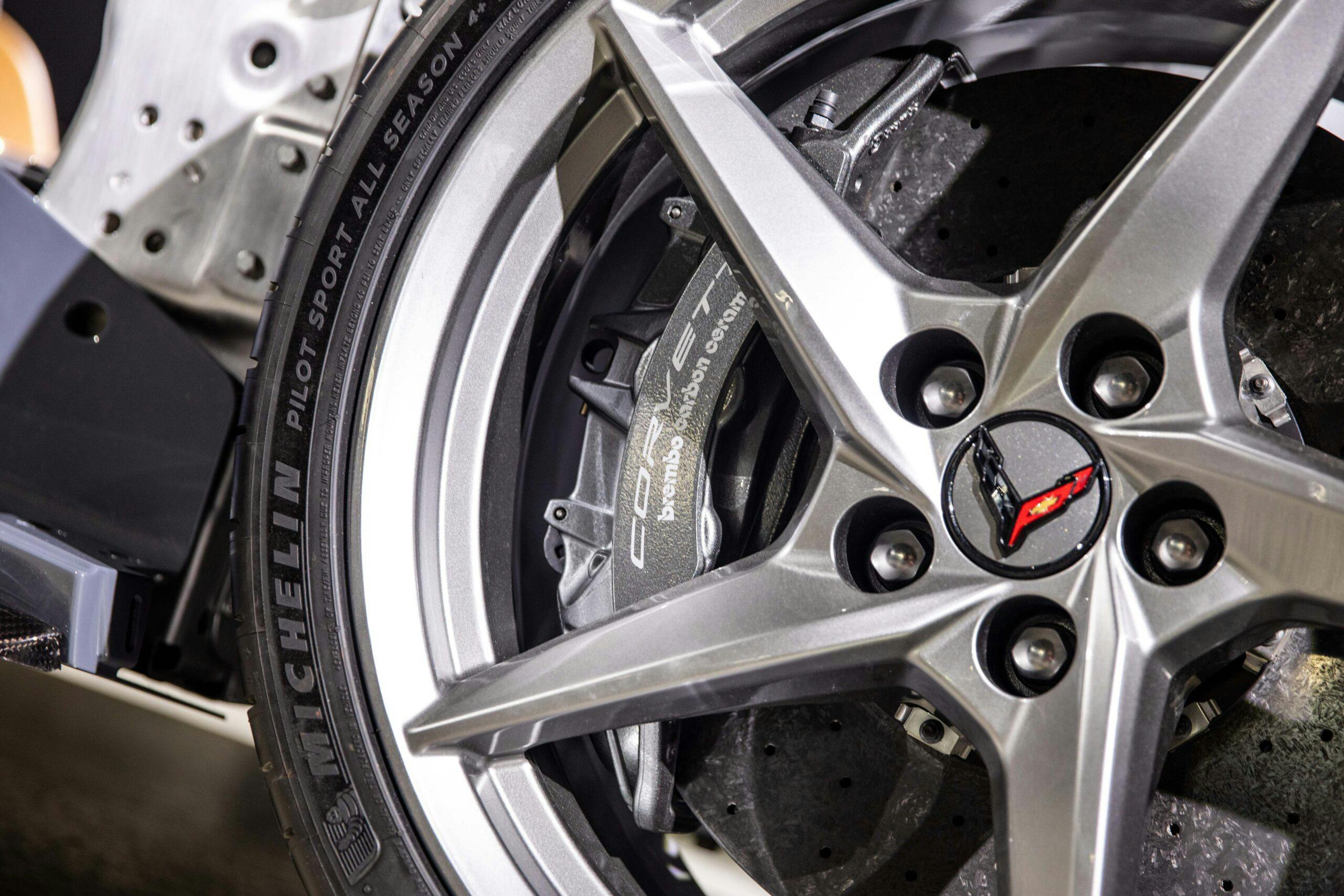
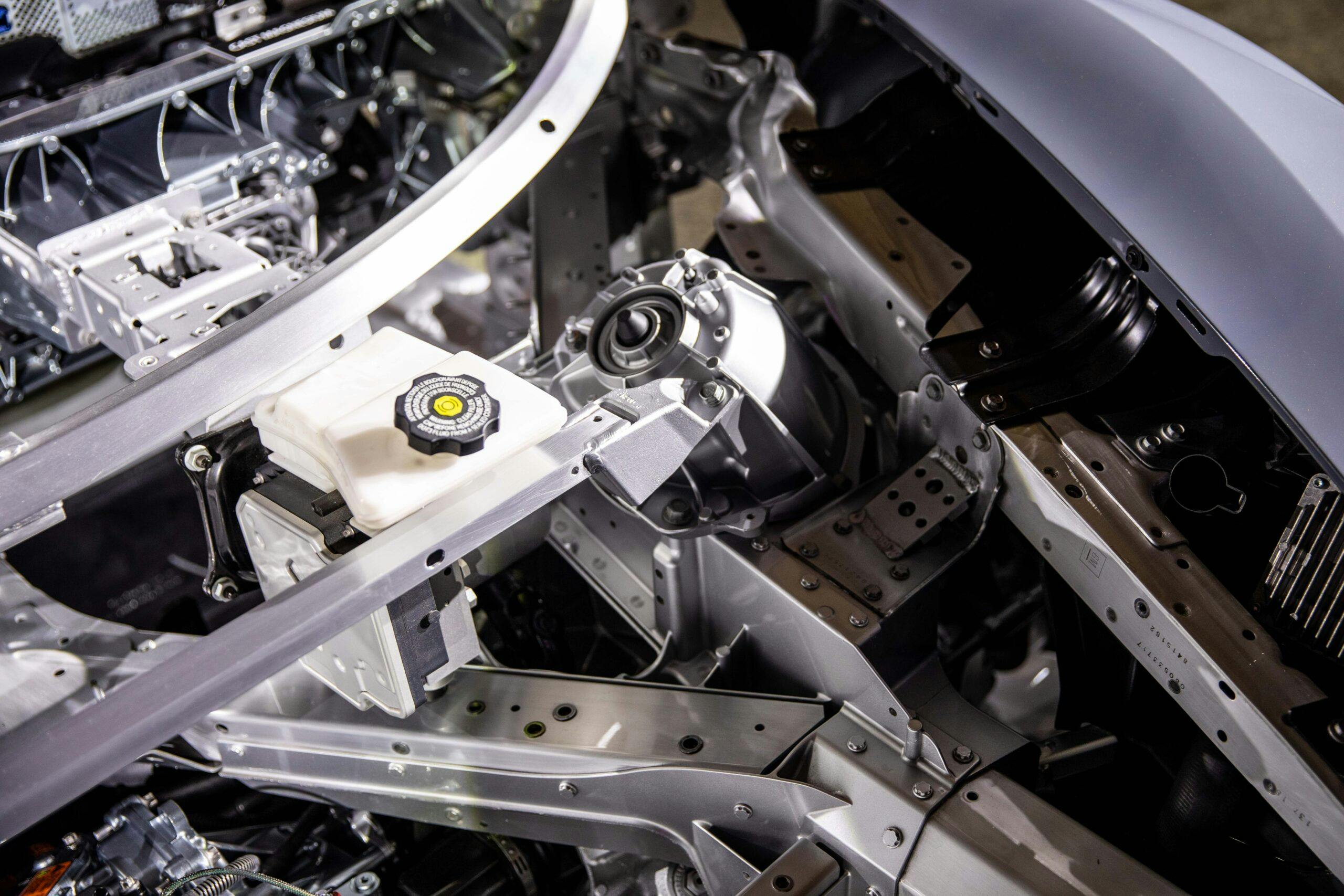
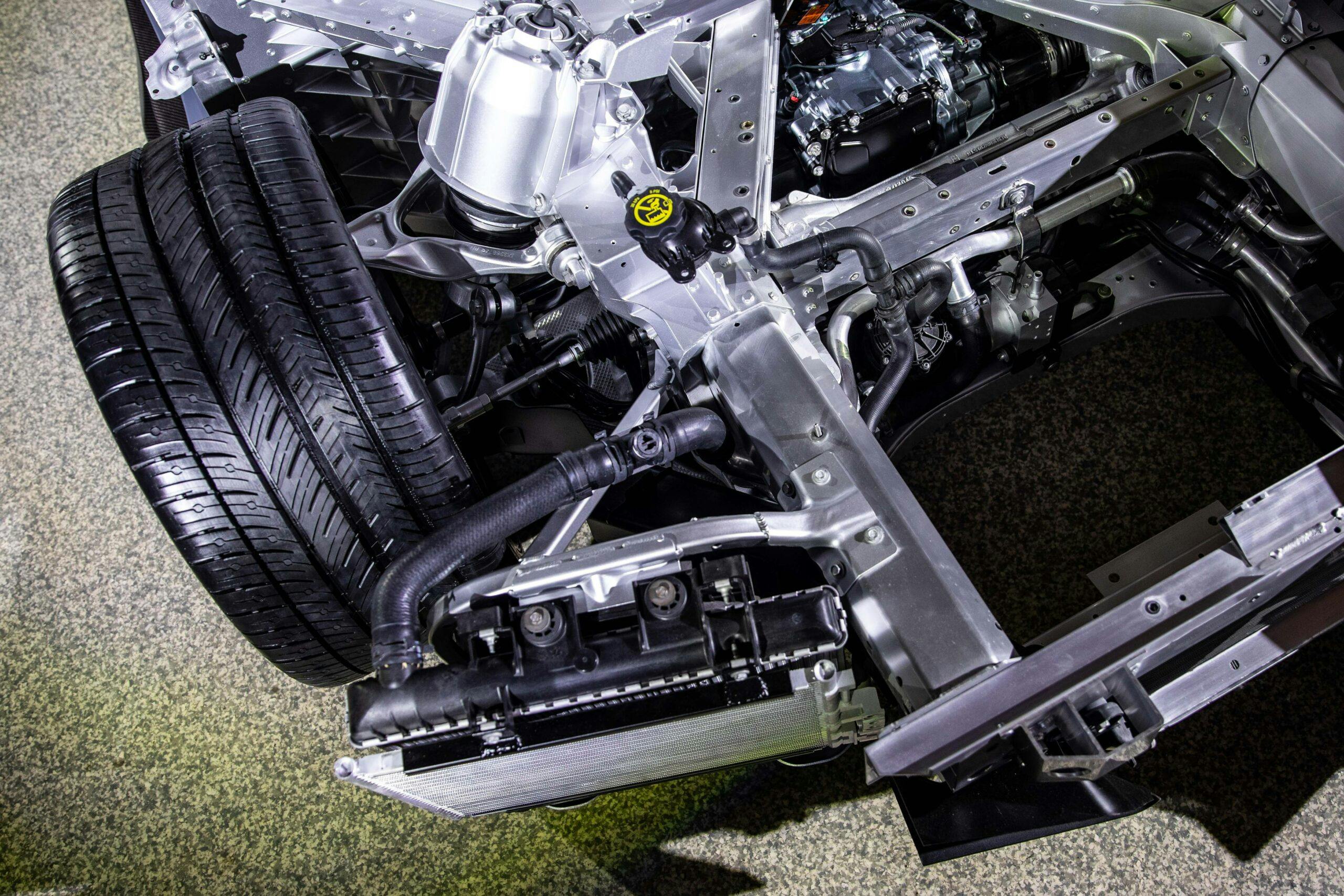
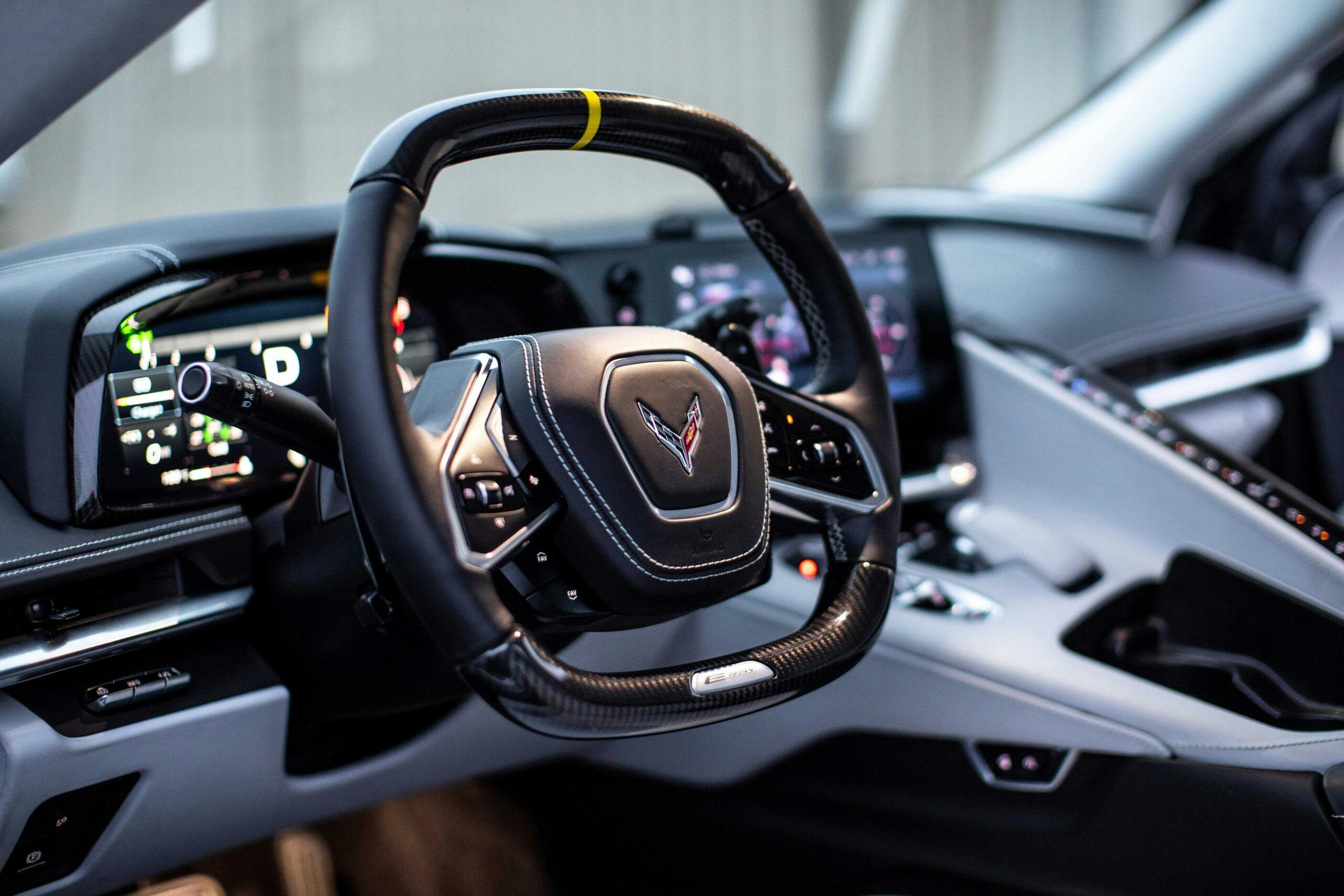

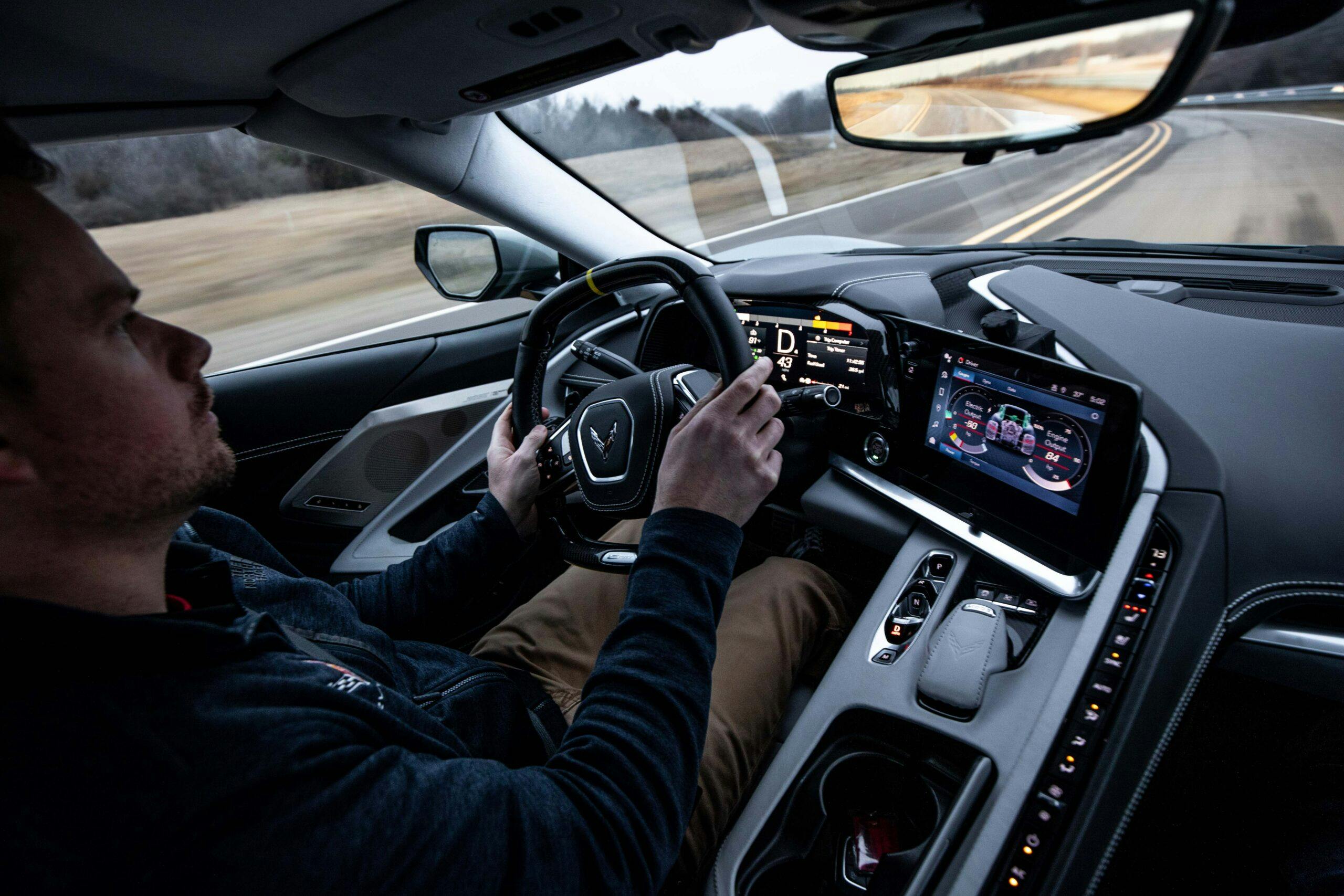
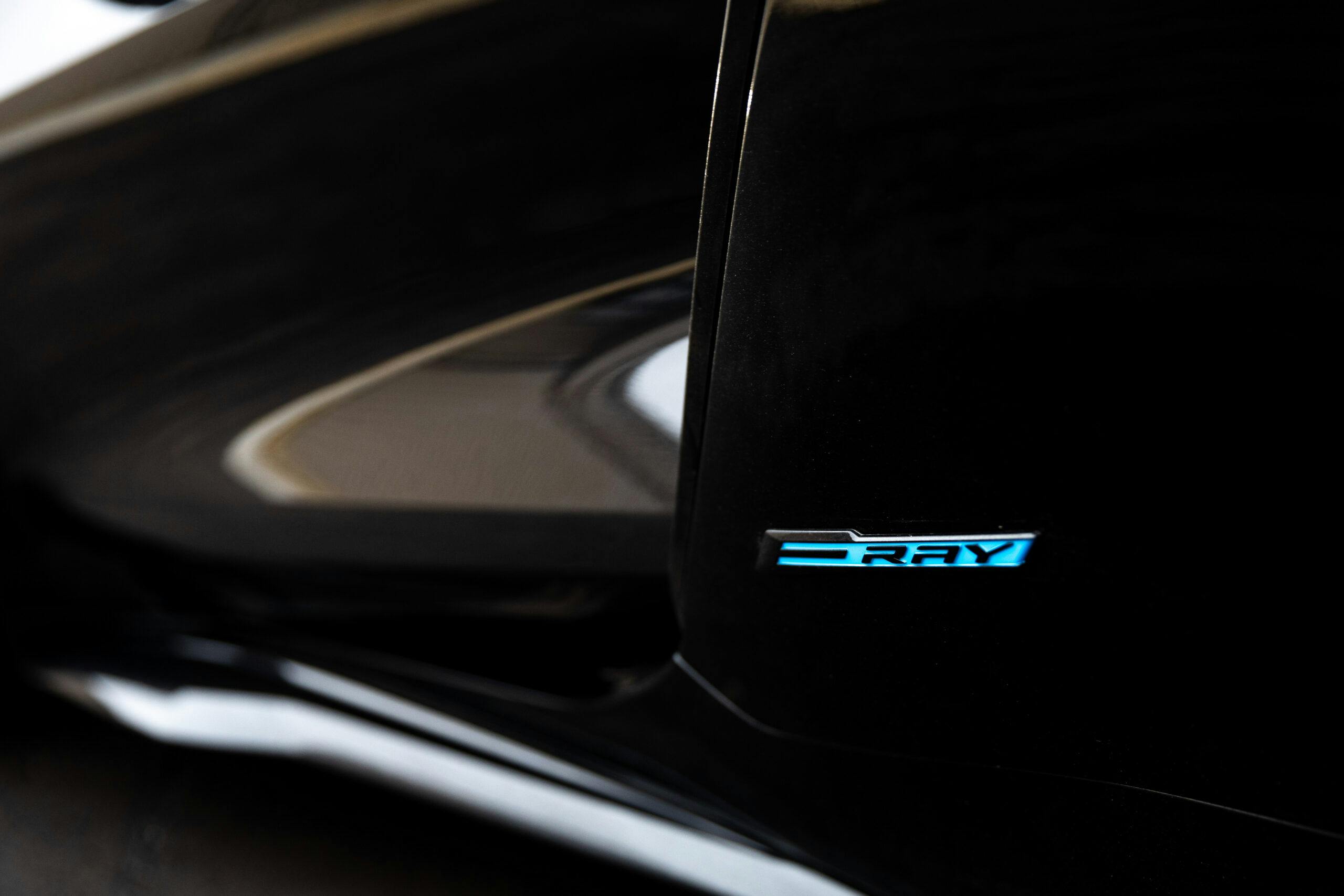

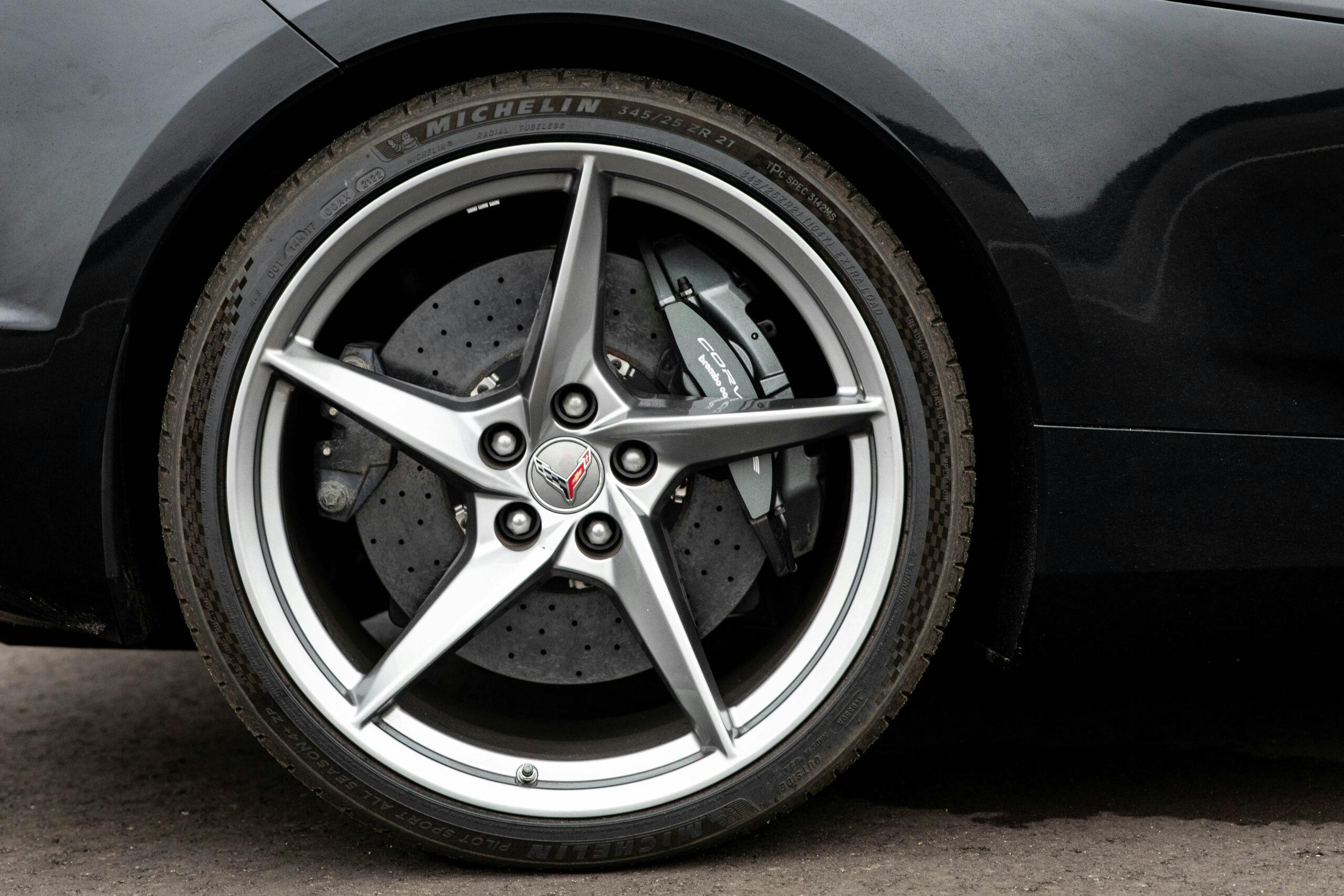
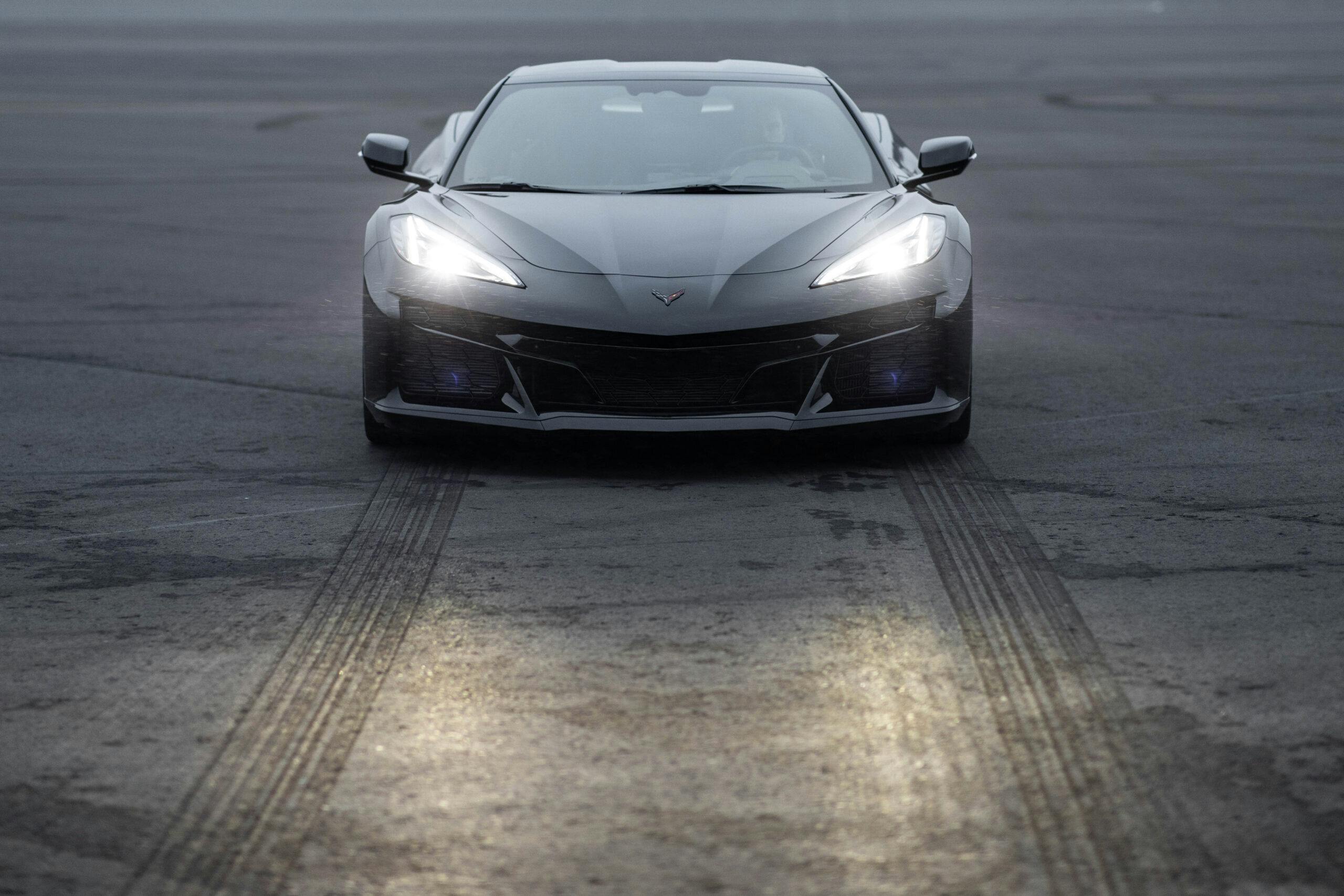
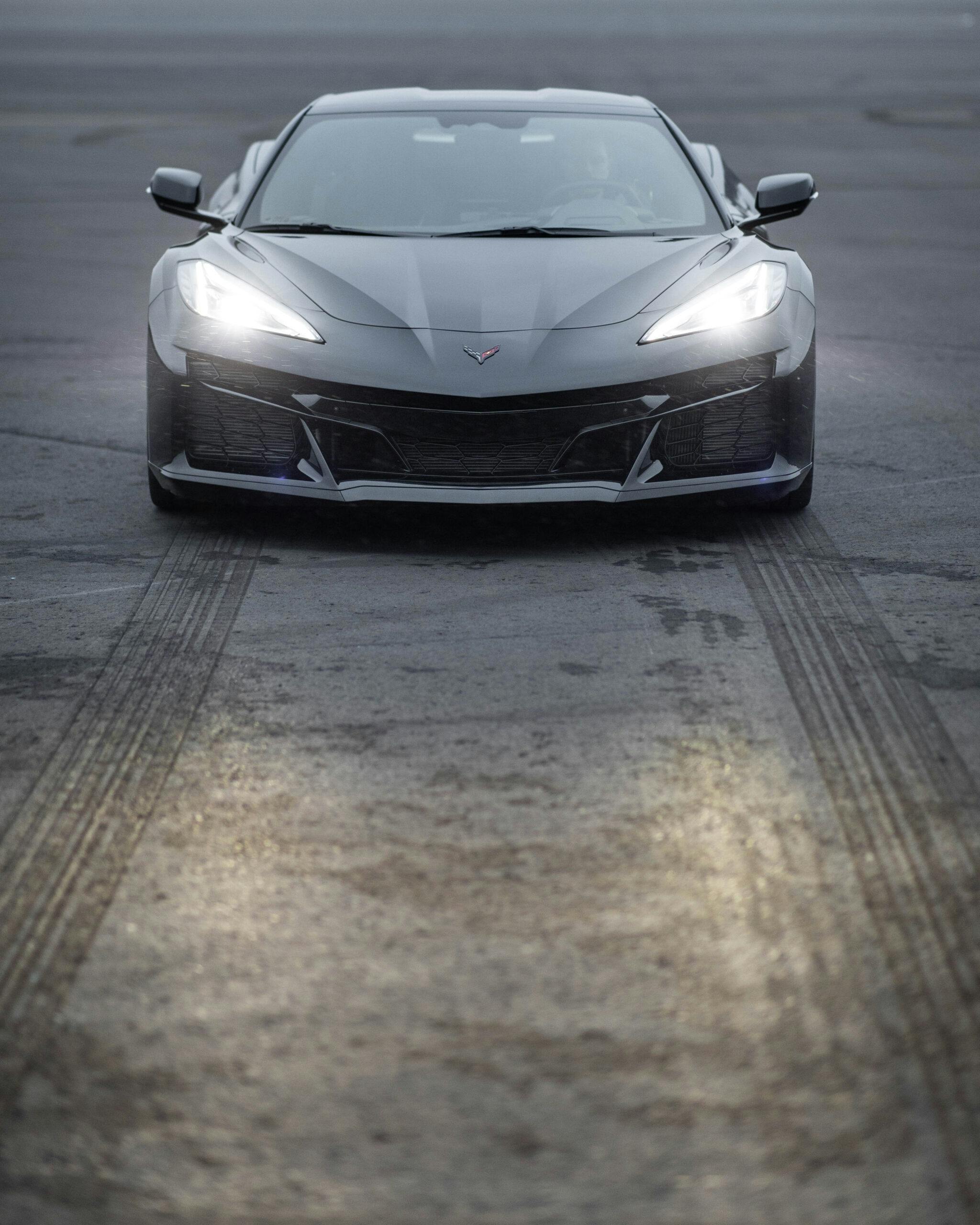


What an awesome and beautiful car! I would love to own one! C’mon lottery.
Couldn’t care less about the word “hybrid”! Just an added great feature for a double whammy!
Well done Design and cofort car
Well done Design car and cofort
“My guess is that there are some customers who want a $100+ Corvette that can go 0-60 in 2.5 seconds but don’t want the stiffness, harshness, noise, and aero-heavy looks of the Z06.”
This.
How long do you think a 1.9 Kw/hr battery will power a 160hp electric motor? IIRC, I believe Chevy said the all-electric range was 2-3 miles?
Forget the all-weather or track day fantasy; this thing was made to do one thing: let its owners save face when that Tesla pulls-up next to them at a stoplight.
I started with my first Vett- 1957 cost me $500, a 59 , a 60 , a 61, a 63 S/W (couldn’t see out the window paid $650 sold it for $850 (big profit for me). I guess I was a solid axle guy for years but I didn’t cut down the independent axle thing. I switched to exotics in the 2000s Lambo , Ferraris 2 , Mclaren 650S fot the last 5 years. But when I heard about this hybrid idea I was sold along with the Mac. I have a PHEV which showed me the potential for the electric instant response. I am on the list and can’t wait for the order date. Light to light performance should be a thrill and having a car that should drive quite well for a reasonable cost is a bonus. However I am not that sold on an all electric Vette yet ; but I am keeping an open mind.
Looks just like a copy of a Ferrari 458. No original lines or look to the car at all. They could have just bought a bunch of Ferrari shells and put a Chevy logo on them and saved some time and development.
I’m happy enough with my 68, spenging $105k isn’t going to make me happier…
Boomer central in the comments lol
Sigh. Americans and their wobbly old measurement system. I’d love to know more about this stunning vehicle but have no idea how fast, slow or anything else any of this means.